Adopt A Healthy Lifestyle. Take Charge.
Blue indicates link
A healthy diet is a diet that helps to maintain or improve overall health. A healthy diet provides the body with essential nutrition: fluid, macronutrients, micronutrients, and adequate calories.
A healthy diet may contain fruits, vegetables, and whole grains, and includes little to no processed food and sweetened beverages. The requirements for a healthy diet can be met with a variety of plant-based and animal-based foods, although a non-animal source of vitamin B12 is needed for those following a vegan diet. Various nutrition guides are published by medical and governmental institutions to educate individuals on what they should be eating to be healthy. Nutrition facts labels are also mandatory in some countries to allow consumers to choose between foods based on the components relevant to health.
Healthful eating means consuming nutrient-dense foods in the right quantities from all the food groups.
People often think of a diet as a specific weight-loss plan, but diet is simply the types and amounts of food we eat.
A good diet must include a balance of several food groups, as no single group can provide everything we need for good health.
With more than 2 out of every 3 American adults now considered overweight or obese, healthful eating habits are more important than ever.
There is so much information available that finding a suitable option can be overwhelming, but a few simple changes can make a diet more healthful and reduce the risk of numerous medical problems.
What is healthy eating?
A balanced diet is central to healthy eating.
Having a balanced diet means choosing from all five main food groups, in the right quantities.
Whole grains
Examples of whole grains are wholemeal bread, pasta, and cereals, in which each grain includes the germ and bran.
To make sure the grains are whole grains, look for the word “whole” or “whole grain” on the nutritional information on the packaging.
Health and Wellness Image Link
Fruits and vegetables:
Fruits and vegetables are rich in vitamins, minerals, and fiber. Choosing a variety of colors can help maximize the intake of nutrients.
The American Heart Association recommends consuming 8 or more servings of fruits and vegetables daily. This equates to about 4.5 cups per day for the average person who consumes around 2,000 calories.
Juices labeled “100 percent” are considered part of this food group, but eating whole fruits or vegetables is better, as it will provide more fiber.
Research shows that a good intake of fruit and vegetables can protect against heart disease, type 2 diabetes, and cancer.
Protein:
Vital for repairing tissues in the body, many protein-rich foods also contain high levels of minerals like iron, magnesium, and zinc.
Excellent sources of protein include meats, fish, and eggs. Beans, nuts, corn, and soya are protein options for those on a vegetarian diet.
Dairy:
A calcium-rich diet promotes healthy bones and teeth. Dairy products are good sources of calcium. Low-fat milk, yogurt, and cheese are recommended.
Fats:
Fats are important for brain health, energy, absorption of certain vitamins, and for skin, hair, and joint health.
Saturated fats are present in the cream, fatty meat, and fried foods. Too much-saturated fat can lead to heart disease.
Unsaturated fats are present in avocado and oily fish. They help reduce the “bad” cholesterol in the blood.
The World Health Organization (WHO) recommends that healthy fats should make up less than 30 percent of total calories.
Sugars:
Sugars occur naturally in some foods, such as fruits, or they can be added as a sweetener. Too much sugar can lead to weight gain, heart problems, blood sugar imbalances, and other health issues.
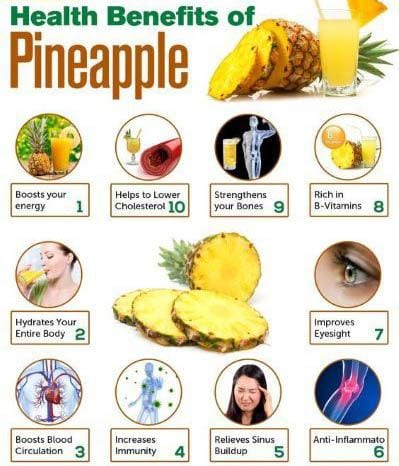
The American Heart Association (AHA) recommends limiting added sugar to 6 teaspoons a day or less for women, and 9 teaspoons a day for men.
Here are six tips to help you eat your way to better health.
1: Manage portion size
People of different ages, genders, and activity levels need different amounts of food, but many people take in more energy than they use. Researchers believe there are large portion sizes and obesity.
The AHA explains that a portion is what we choose to eat, while a serving is the amount of food listed on the nutrition facts label.
Examples of servings are one slice of bread and one wedge of melon.
Paying attention to what a serving is, how many calories are in a serving, and how much you are eating can make the difference between obesity and maintaining a healthy weight.
2: Eat fresh and avoid processed
Fresh foods offer more nutrients and fewer additives.
Processed foods are thought to make up 70 percent of the average American diet.
Fresh foods are more likely to be “nutrient-rich,” while processed foods are often “energy-rich,” with added fats and sugars.
Whole foods, such as fresh fruit, are a good source of vitamins and minerals.
Processed foods not only contain added ingredients, including dyes and preservatives, but the processing itself can destroy nutrients.
Some processed foods contain little nutritional value. Consuming a high proportion of processed foods can increase the risk of heart disease and diabetes.
3: Limit added sugars
Naturally occurring sugars include fructose, found in fruit, and lactose, in dairy products.
Adding sugar to foods and drinks enhances the flavor but adds little or no nutritional value.
Swapping cakes and cookies for fruit, and halving the sugar added to coffee and tea can reduce sugar intake.
Replacing sweetened sodas with sparkling water, and drinking alcohol in moderation can further reduce excess calories. The Centers for Disease Control and Prevention (CDC) recommends limiting alcohol intake to one drink per day for women and two drinks per day for men.
Condiments such as ketchup can also provide more calories than expected.
4: Replace animal fats in the diet
Animal produce is often high in saturated fats. These are difficult for the body to break down, so levels of harmful cholesterol in the body can rise, potentially leading to heart disease.
Unsaturated fats are found in oily fish and nuts, and these are more health, taken in moderation.
To reduce the amount of unhealthy fat in the diet:
choose low-fat meat
Cook meat and chicken without the skin
Grill or boil meat instead of frying
Use vegetable oil rather than animal fat
replace some meat servings with oily fish, nuts, beans, or legumes
5: Sodium down, potassium up
Sodium, found in salt, is directly linked to high blood pressure because it increases water retention.
Potassium counteracts the harmful effects of salt. Bananas, tuna, and butternut squash are good sources of potassium. Too much can lead to irregular heart rhythms, so supplements are not recommended.
Limiting the intake of processed foods will reduce sodium intake, as salt is often added during processing.
For flavor, try replacing salt with herbs such as basil, rosemary, garlic, oregano, paprika, and cayenne, or low-salt condiments such as yellow mustard.
Calcium is crucial for strengthening and maintaining the bone structure. Vitamin D enables the body to absorb calcium.
Good sources of calcium include:
dairy produce
soybeans
collard greens
white beans
Dietary sources do not provide enough vitamin D for the body. Sunlight is necessary to help the body synthesize vitamin D.
Exposing some bare skin to the sunlight each day will help maintain levels of calcium and vitamin D.
For best results, always follow a healthy diet alongside an active lifestyle.
The fundamentals of healthy eating
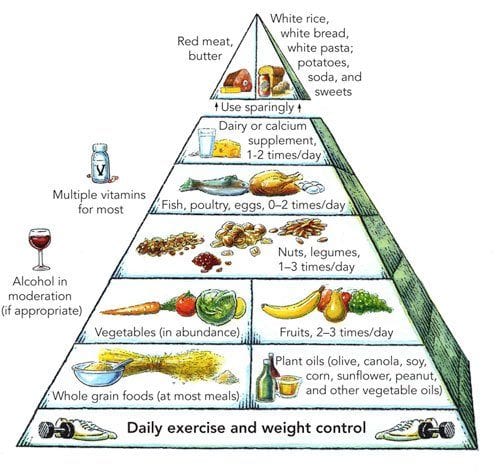
While some extreme diets may suggest otherwise, we all need a balance of protein, fat, carbohydrates, fiber, vitamins, and minerals in our diets to sustain a healthy body. You don’t need to eliminate certain categories of food from your diet but rather select the healthiest options from each category.
Protein:
Gives you the energy to get up and go—and keep going—while also supporting mood and cognitive function. Too much protein can be harmful to people with kidney disease, but the latest research suggests that many of us need more high-quality protein, especially as we age. That doesn’t mean you have to eat more animal products—a variety of plant-based sources of protein each day can ensure your body gets all the essential protein it needs.
Fat:
Not all fat is the same. While bad fats can wreck your diet and increase your risk of certain diseases, good fats protect your brain and heart. In fact, healthy fats—such as omega-3s—are vital to your physical and emotional health. Including more healthy fat in your diet can help improve your mood, boost your well-being, and even trim your waistline. Learn more »
Fiber:
Eating foods high in dietary fiber (grains, fruit, vegetables, nuts, and beans) can help you stay regular and lower your risk for heart disease, stroke, and diabetes. It can also improve your skin and even help you to lose weight. Learn more »
As well as leading to osteoporosis, not getting enough calcium in your diet can also contribute to anxiety, depression, and sleep difficulties. Whatever your age or gender, it’s vital to include calcium-rich foods in your diet, limit those that deplete calcium, and get enough magnesium and vitamins D and K to help calcium do its job. Learn more »
Carbohydrates:
It is one of your body’s main sources of energy. But most should come from complex, unrefined carbs (vegetables, whole grains, fruit) rather than sugars and refined carbs. Cutting back on white bread, pastries, starches, and sugar can prevent rapid spikes in blood sugar, fluctuations in mood and energy, and a build-up of fat, especially around your waistline.
Add more fruit and vegetables to your diet:
Fruit and vegetables are low in calories and nutrient-dense, which means they are packed with vitamins, minerals, antioxidants, and fiber. Focus on eating the recommended daily amount of at least five servings of fruit and vegetables and it will naturally fill you up and help you cut back on unhealthy foods. A serving is half a cup of raw fruit or veg or a small apple or banana, for example. Most of us need to double the amount we currently eat.
To increase your intake:
Add antioxidant-rich berries to your favorite breakfast cereal
Eat a medley of sweet fruit—oranges, mangoes, pineapple, grapes—for dessert
Swap your usual rice or pasta side dish for a colorful salad
Instead of eating processed snack foods, snack on vegetables such as carrots, snow peas, or cherry tomatoes along with a spicy hummus dip or peanut butter
What is a balanced diet?
A balanced diet is one that gives your body the nutrients it needs to function correctly. To get the proper nutrition from your diet, you should consume the majority of your daily calories in:
fresh fruits
fresh vegetables
whole grains
legumes
nuts
lean proteins
Vegetables are primary sources of essential vitamins and minerals. Dark, leafy greens generally contain the most nutrition and can be eaten at every meal. Eating a variety of vegetables will help you obtain the bountiful nutrients that all vegetables provide.
Examples of dark leafy greens include:
spinach
kale
green beans
broccoli
collard greens
Swiss chard
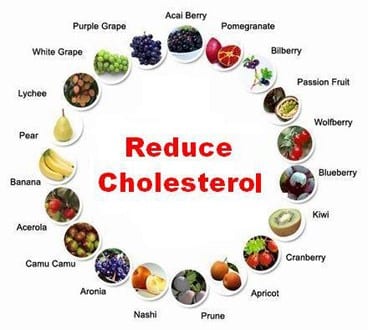
Grains:
According to the USDA, Americans consume refined white flour more than any other grain. Refined white flour has poor nutritional value because the hull of the grain, or outer shell, is removed during the refining process. The hull is where the majority of the grain’s nutrition lies.
Whole grains, however, are prepared using the entire grain, including the hull. They provide much more nutrition. Try switching from white bread and pasta to whole-grain products.
Proteins:
Meats and beans are primary sources of protein, a nutrient that is essential for proper muscle and brain development. Lean, low-fat meats such as chicken, fish, and certain cuts of pork and beef are the best options. Removing the skin and trimming off any visible fat are easy ways to reduce the amount of fat and cholesterol in meats. The health and diet of the animal are important and influence the fatty acid profile of the meat, so grass-fed choices are ideal.
Nuts and beans are good sources of protein and contain many other health benefits, as well as fiber and other nutrients. Try to eat:
lentils
beans
peas
almonds
sunflower seeds
walnuts
Tofu, tempeh, and other soy-based products are excellent sources of protein and are healthy alternatives to meat.
Shop for tofu and tempeh.
Dairy:
Dairy products provide calcium, vitamin D, and other essential nutrients. However, they’re also major sources of fat, so it may be best to choose small portions of full-fat cheeses, and reduced-fat or fat-free milk and yogurt. Plant-based milk, such as those made from flaxseed, almonds, or soy are typically fortified with calcium and other nutrients, making them excellent alternatives to dairy from cows.
Shop for almond and soy milk.
Oils should be used sparingly. Opt for low-fat and low-sugar versions of products that contain oil, such as salad dressing and mayonnaise. Good oils, such as olive oil, can replace fattier vegetable oil in your diet. Avoid deep-fried foods because they contain many empty calories.
Shop for olive oil.
The USDA has an online checklist that can help you determine how much of each food group you should consume daily.
Besides adding certain foods to your diet, you should also reduce your consumption of certain substances to maintain a balanced diet and healthy weight. These include:
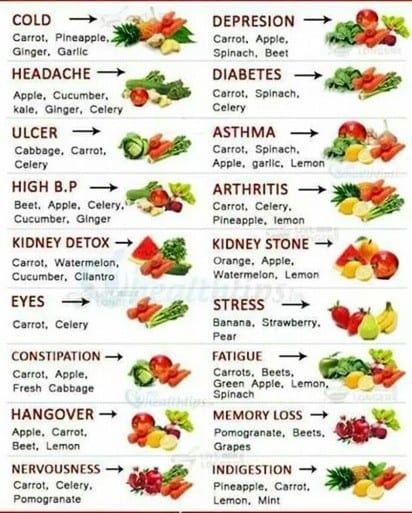
alcohol
refined grains
solid fats
saturated fats
trans fats
salt
sugars
Along with a healthy diet, exercise is paramount to a healthy lifestyle:
You know exercise is good for you, but do you know how good? From boosting your mood to improving your sex life.
1. Exercise controls weight
Exercise can help prevent excess weight gain or help maintain weight loss. When you engage in physical activity, you burn calories. The more intense the activity, the more calories you burn.
Regular trips to the gym are great but don’t worry if you can’t find a large chunk of time to exercise every day. Any amount of activity is better than none at all. To reap the benefits of exercise, just get more active throughout your day — take the stairs instead of the elevator or rev up your household chores. Consistency is key.
2. Exercise combats health conditions and diseases
Worried about heart disease? Hoping to prevent high blood pressure? No matter what your current weight is, being active boosts high-density lipoprotein (HDL) cholesterol, the “good” cholesterol, and it decreases unhealthy triglycerides. This one-two punch keeps your blood flowing smoothly, which decreases your risk of cardiovascular diseases.
Regular exercise helps prevent or manage many health problems and concerns, including:
- Stroke
- Metabolic syndrome
- High blood pressure
- Type 2 diabetes
- Depression
- Anxiety
- Many types of cancer
- Arthritis
- Falls
It can also help improve cognitive function and helps lower the risk of death from all causes.
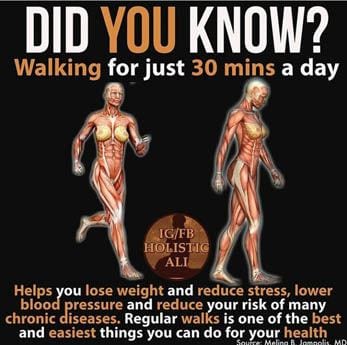
3. Exercise improves mood
Need an emotional lift? Or need to blow off some steam after a stressful day? A gym session or brisk walk can help. Physical activity stimulates various brain chemicals that may leave you feeling happier, more relaxed, and less anxious.
You may also feel better about your appearance and yourself when you exercise regularly, which can boost your confidence and improve your self-esteem.
4. Exercise boosts energy
Winded by grocery shopping or household chores? Regular physical activity can improve your muscle strength and boost your endurance.
Exercise delivers oxygen and nutrients to your tissues and helps your cardiovascular system work more efficiently. And when your heart and lung health improve, you have more energy to tackle daily chores.
5. Exercise promotes better sleep
Struggling to snooze? Regular physical activity can help you fall asleep faster, get better sleep, and deepen your sleep. Just don’t exercise too close to bedtime, or you may be too energized to go to sleep.
6. Exercise puts the spark back into your sex life
Do you feel too tired or too out of shape to enjoy physical intimacy? Regular physical activity can improve energy levels and increase your confidence in your physical appearance, which may boost your sex life.
But there’s even more to it than that. Regular physical activity may enhance arousal for women. Men who exercise regularly are less likely to have problems with erectile dysfunction than men who don’t exercise.
7. Exercise can be fun … and social!
Exercise and physical activity can be enjoyable. They give you a chance to unwind, enjoy the outdoors or simply engage in activities that make you happy. Physical activity can also help you connect with family or friends in a fun social setting.
So take a dance class, hit the hiking trails, or join a soccer team. Find a physical activity you enjoy, and just do it. Bored? Try something new, or do something with friends or family.
The bottom line on exercise
Exercise and physical activity are great ways to feel better, boost your health, and have fun. For most healthy adults, the Department of Health and Human Services recommends:
- At least 150 minutes a week of moderate aerobic activity 75 minutes a week of vigorous aerobic activity, or a combination of moderate and vigorous activity. The guidelines suggest that you spread this exercise throughout the week. Examples include running, walking, or swimming. Even small amounts of physical activity are helpful, and accumulated activity throughout the day adds up to provide health benefits.
- Strength training exercises for all major muscle groups at least two times a week. Examples include lifting free weights, using weight machines, or doing body-weight training.
Spread your activities throughout the week. If you want to lose weight, meet specific fitness goals, or get even more benefits, you may need to ramp up your moderate aerobic activity to 300 minutes or more a week.
Remember to check with your doctor before starting a new exercise program, especially if you have any concerns about your fitness, haven’t exercised for a long time, or have chronic health problems, such as heart disease, diabetes, or arthritis.
Sleep for a Healthy Lifestyle
A lack of sleep at night can make you cranky the next day. And over time, skimping on sleep can mess up more than just your morning mood. Studies show getting quality sleep on a regular basis can help improve all sorts of issues, from your blood sugar to your workouts.
Here’s why you should give your body the ZZZs it needs.
Sharper Brain
When you’re running low on sleep, you’ll probably have trouble holding onto and recalling details. That’s because sleep plays a big part in both learning and memory. Without enough sleep, it’s tough to focus and take in new information. Your brain also doesn’t have enough time to properly store memories so you can pull them up later.
Sleep lets your brain catch up so you’re ready for what’s next.
Mood Boost
Another thing that your brain does while you sleep is processing your emotions. Your mind needs this time in order to recognize and react the right way. When you cut that short, you tend to have more negative emotional reactions and fewer positive ones.
Chronic lack of sleep can also raise the chance of having a mood disorder. One large study showed that when you have insomnia, you’re five times more likely to develop depression, and your odds of anxiety or panic disorders are even greater.
Refreshing slumber helps you hit the reset button on a bad day, improve your outlook on life, and be better prepared to meet challenges.
Healthier Heart
While you sleep, your blood pressure goes down, giving your heart and blood vessels a bit of a rest. The less sleep you get, the longer your blood pressure stays up during a 24-hour cycle. High blood pressure can lead to heart disease, including stroke.
Short-term downtime can have long-term payoffs.
Athletic Achievement
If your sport requires quick bursts of energy, like wrestling or weightlifting, sleep loss may not affect you as much as endurance sports like running, swimming, and biking. But you’re not doing yourself any favors.
Besides robbing you of energy and time for muscle repair, lack of sleep saps your motivation, which is what gets you to the finish line. You’ll face a harder mental and physical challenge — and see slower reaction times.
Proper rest sets you up for your best performance.

Mediation for peace and calm
How Many Hours of Sleep Do You Need?
The amount of sleep a person needs depends on many things, including their age. In general:
- Infants (ages 0-3 months) need 14-17 hours a day.
- Infants (ages 4-11 months) need 12-15 hours a day
- Toddlers (ages 1-2 years) need about 11-14 hours a day.
- Preschool children (ages 3-5) need 10-13 hours a day.
- School-age children (ages 6-13) need 9-11 hours a day.
- Teenagers (ages 14-17) need about 8-10 hours each day.
- Most adults need 7 to 9 hours, although some people may need as few as 6 hours or as many as 10 hours of sleep each day.
- Older adults (ages 65 and older) need 7-8 hours of sleep each day.
- Women in the first 3 months of pregnancy often need several more hours of sleep than usual.
But experts say that if you feel drowsy during the day, even during boring activities, you haven’t had enough sleep.
Sleep Deprivation and Sleep Debt
The amount of sleep a person needs also goes up if they’ve missed sleep in previous days. If you don’t have enough, you’ll have a “sleep debt,” which is much like being overdrawn at a bank. Eventually, your body will demand that you start to repay the debt.
We don’t really adapt to getting less sleep than we need. We may get used to a schedule that keeps us from getting enough sleep, but our judgment, reaction time, and other functions will still be off.
Signs of Sleep Deprivation
Common signs that you haven’t gotten enough sleep include:
- Feeling sleepy during the day, especially during calm activities like sitting in a movie theater or sitting in traffic
- Falling asleep within 5 minutes of lying down
- Short periods of sleep during waking hours (microsleeps)
- Mood changes
- Forgetfulness
- Being unable to focus on a task
The Effects of Sleep Deprivation
Too little sleep can cause:
- Memory problems
- Feelings of depression
- A weakened immune system, raises your chance of getting sick
- Stronger feelings of pain
- A higher risk of conditions like high blood pressure, diabetes, heart attack, or obesity
- A lower sex drive
- Wrinkled skin and dark circles under your eyes
- Overeating and weight gain
- Bad decision-making
The Very Real Benefits of Sunshine for Health
Sun exposure not only triggers the skin to synthesize vitamin D which promotes the absorption of calcium and phosphorus, thereby helping the body to form and maintain strong bones and teeth but can also protect against high blood pressure and reduce the risk of heart attack and strokes, this according to new research from the University of Southampton and the University of Edinburgh. The benefits of sunshine for health may be greater than we ever realized.
The new British study examined the skin of 24 healthy participants exposed to ultraviolet (UVA) light from tanning lamps during two sessions, each lasting 20 minutes. In the first session, the volunteers were exposed to both the UVA rays and the heat of the lamps, and in the second session, the UV was blocked so that only the heat of the lamps affected the skin. The British researchers found that just 20 minutes of exposure to natural sunlight could dilate blood vessels and lower blood pressure. The researchers found a consistent relationship between the release of nitric oxide (NO) from skin storage and the reduction in blood pressure, as well as changes in plasma nitrite and nitrate.
According to Martin Feelisch, professor of experimental medicine and integrative biology at the University of Southampton and one of the co-authors of the new study, when exposed to sunlight, small amounts of nitric oxide (NO) are transferred from the skin to the blood circulation, blood vessel tone is reduced, blood pressure drops and the risk of heart attack and stroke also dropped. Nitric oxide is also known as nitrogen monoxide and it is a molecule with the chemical formula NO. The study findings suggest that UVA dilates blood vessels, causing the blood pressure to drop.
For years, scientists have known that both systolic and diastolic blood pressure tend to be lowest in the summer and greatest in countries that are farther from the equator and during the winter months. The new British study suggests that these known scientific phenomena may be due to variations in sun exposure and not to variations in changes in temperature.
Avoiding excess sunlight exposure is critical to prevent skin cancer, but fear or a different lifestyle to avoid sunlight exposure can increase the risk of cardiovascular disease, according to Professor Martin Feelisch. Heart disease is a major problem in the United States and it is the leading cause of death for both men and women: about 600,000 Americans die from heart disease in the United States each year—that is 1 out of every 4 deaths.
This new research finding on the benefit of sunlight to the body is valuable to those who are affected by Adrenal Fatigue Syndrome (AFS) and are in recovery. Not only does natural sunlight promote strong bones and teeth, but it also proves extremely beneficial to both the heart and brain in its ability to lower the risk for both heart attacks and stroke. The key is knowing how much exposure is needed. Sufferers of AFS, especially in advanced stages, tend to have temperature regulation issues. Short exposure to sunlight may trigger adrenal crashes. Even indirect sunlight tolerance may be limited. This has to do with the way the body’s anti-stress mechanism is dysfunctional.
When stress is high, the body creates more cortisol to assist in defending itself. Cortisol is an anti-stress hormone created by adrenal glands. Cortisol can actually contract arteries that are mid-sized, which therefore leads to high blood pressure. This knowledge is especially important to AFS recovery because sunlight was also found to lower blood pressure and dilate blood vessels, which would offset some possible cortisol effects. Chronic stress in itself can cause a great increase in blood pressure as well, proving additional benefits of sunshine for health. Since people with AFS have adrenals that are overworked and can react negatively to prescription drugs due to paradoxical reactions, this natural tool to assist in heart and mind health is extremely valuable.
There are also benefits of sunshine for health by assisting the body’s encompassing and natural defense mechanism, which is called the NeuroEndoMetabolic (NEM) Stress ResponseSM system. Comprised of two different components – called the neuroendocrine and metabolic parts – which team together with various organs and systems to battle stress in the body. Sunlight helps assist not only the neuroendocrine component of this system – which includes both the heart and adrenals – but the entire NEM since both segments are inexplicably intertwined.
Assistance with battling stress and promoting the general function of organs means not only a healthier person but less stress. People who suffer from AFS – as well as the general population – could benefit tremendously by incorporating even a small amount of outdoor time into their day to soak up some sunshine for health!
Water For a Healthy Lifestyle
Drinking Water Helps Maintain the Balance of Body Fluids. Your body is composed of about 60% water. The functions of these bodily fluids include digestion, absorption, circulation, creation of saliva, transportation of nutrients, and maintenance of body temperature.
“Through the posterior pituitary gland, your brain communicates with your kidneys and tells it how much water to excrete as urine or hold onto for reserves,” says Guest, who is also an adjunct professor of medicine at Stanford University.
Best Time To Drink Water
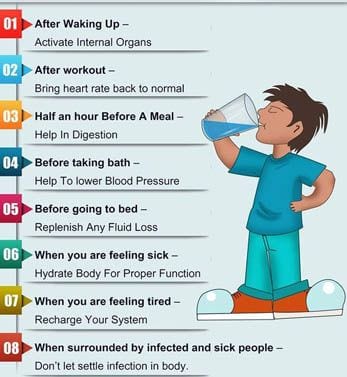
When you’re low on fluids, the brain triggers the body’s thirst mechanism. And unless you are taking medications that make you thirsty, Guest says, you should listen to those cues and get yourself a drink of water, juice, milk, coffee — anything but alcohol.
“Water is important to the mechanics of the human body. The body cannot work without it, just as a car cannot run without gas and oil. In fact, all the cell and organ functions that make up our entire anatomy and physiology depend on water for their functioning.”
Our body weight is comprised of 60 percent water. Every cell, organ, and tissue uses water for a myriad of functions, from protecting tissues and joints to providing necessary moisture for the brain and spinal cord. Water is required for the removal of waste products, healthy digestion, and maintaining optimal body temperature.
We all know and understand the importance of water, yet some of us are not mindful of this fact. Some of us go an entire day without bothering to reach for a bottle or fill a glass with water. Needless to say, this is a bad habit that is harmful to our health and well-being.
“But I drink coffee, that has water.” Yes, and, unless it is decaffeinated (what’s that?), it also contains diuretic properties that negate most of its inherent nutritional value. Tea? Same concept.
Some of us just don’t “like the taste” of water. That’s fair, which is why we decided to research and write about things we can add to our water that not only improves health but also helps improve the taste.
In adding these ingredients to your water, you’ll benefit in a couple of ways. First, your body will be replenished, and you’ll likely “feel” healthier. Second, it will help you think clearer and promote a healthier state of mind.
Importance of water:
Water is needed for most body functions, including:
- maintain the health and integrity of every cell in the body
- keep the bloodstream liquid enough to flow through blood vessels
- help eliminate the by-products of the body’s metabolism, excess electrolytes (for example, sodium and potassium), and urea, which is a waste product formed through the processing of dietary protein
- Regulate body temperature through sweating
- moisten mucous membranes such as those of the lungs and mouth
- lubricate and cushion joints
- reduce the risk of cystitis by keeping the bladder clear of bacteria
- aid digestion and prevent constipation
- Moisturize the skin to maintain its texture and appearance
- carry nutrients and oxygen to cells
- serve as a shock absorber inside the eyes, spinal cord, and in the amniotic sac surrounding the fetus in pregnancy.
Clean Air For A Better Respiratory System
What Do We Breathe?
This a huge issue. The air we breathe does contain toxins. Recently we have heard about “The Corona Virus” and seen numerous people wearing masks. The drug stores are actually running out of air. Major companies spewing out pollutants, makes me think wearing masks is going to become more common.
Clean air issues in the home
Benzene, for instance, isn’t just a component of fuel for cars and trucks. It is also released by burning firewood. Because firewood is burned at relatively low temperatures, any chemical contaminant in the wood usually survives the heat to get into the air inside the house the firewood is used to heat. Acetaldehyde and formaldehyde along with benzene contaminate indoor air along with benzene, so much that burning firewood is one of the top 10 causes of disease worldwide.
Not just obvious conditions, such as asthma, chronic obstructive pulmonary disease, emphysema, and lung cancer, but also cataracts and birth defects result from exposure to the chemicals released by burning wood. Scientists at the Sahlgrenska University Hospital and Academy in Göteborg, Sweden report that as many as 1.6 million deaths a year result from the indoor air pollution emitted by burning firewood.
Clean air issues and smoking
Other volatile hydrocarbons are released in cigarette smoke. Tobacco smoke contains lactones, esters, amides, imides, lactams, carboxylic acids, aldehydes, nitriles, anhydrides, carbohydrates ketones, alcohols, phenols, amines, N-heterocycles, hydrocarbons, and ethers. Scientists at the National Center for Environmental Health at the US Centers for Disease Control estimate that just in the United States, exposure to these chemicals causes 440,000 deaths a year, and another 9 million people are sick because of tobacco-related air pollution.
We Have The Choice to Control The Air In Our Homes
As far as the air we breathe in our homes we can use filters. Once again Mother Nature also provides us with more natural ways to purify the air that we breathe when we are indoors.
BEST HOUSEPLANTS FOR CLEAN AIR AND BETTER HEALTH:
Spider plants not only clean the air but also look classy! They can be a great addition to your houseplants. Spider plants are among the easiest houseplants to grow, making them a great choice for beginners or forgetful owners. A fan of bright, indirect sunlight, spider plants will send out shoots with flowers that eventually grow into baby spider plants or siderites.
Pollutants removed: formaldehyde and xylene.
This plant blooms fragrant and pretty flowers throughout the year. They clean up ammonia, benzene, formaldehyde, and trichloroethylene from the air. Put peace lilies in a shady spot and keep the soil moist without overwatering.
Pollutants removed: ammonia, benzene, formaldehyde, and trichloroethylene
BAMBOO PALM: A superstar of filtering formaldehyde, benzene, and trichloroethylene these palms thrive in full sun or bright light. The reason they can filter so much air is that they can grow to be pretty big; as tall as four to 12 feet high, making them exciting (and pet-friendly) indoor additions.
Pollutants removed: benzene, formaldehyde, trichloroethylene
An extremely elegant palm with delicate fronds which is good enough to be situated in your living room or hall… This pleasant plant releases lots of moisture into the air, removes toxins very effectively, is easy to look after, and resists insect infestations well.
Pollutants removed: benzene, carbon monoxide, formaldehyde, trichloroethylene, xylene, and more
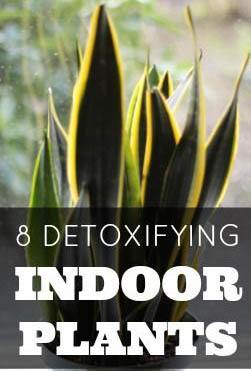
Grow this low-maintenance houseplant in bright, indirect light and allow the soil to dry out between watering. Although this plant has some serious air-cleaning abilities, it can also be taken outside in late spring and brought back indoors when temperatures are warm.
Pollutants removed: formaldehyde, trichloroethylene, and benzene.
These plants don’t need much maintenance but make sure you keep them moist. These plants prefer to clean the air from a cool location with high humidity and indirect light.
Pollutants removed: formaldehyde and xylene from the air.
This is one of the hardest houseplants to kill. Although it does need to be watered occasionally, it generally prefers drier conditions and some sun.
Pollutants removed: benzene, formaldehyde, trichloroethylene, and xylene
Aloe vera is known for its anti-inflammatory and anti-bacterial properties. Apart from being amazing in treating various diseases, it also cleans up the air especially removing formaldehyde and xylene. They don’t need any special maintenance but make sure you don’t ignore or forget them completely or they may dry out.
Pollutants removed: formaldehyde and benzene.
Plant these in your house as they not only clean the air but also add to the look! Some plants may be toxic to pet animals, so if you are a pet owner, check before you buy.
Click the link just below the plant if you are interested in purchasing any.
Fitness Inspiration Image Link
Foods and Nutrition Image Link
The Six Greatest Doctors Come Free To Us, Let Us Use Them

We have to take responsibility for ourselves and follow certain health guidelines so we can live both a healthy physical and mental lifestyle.
Thank you for Reading.
Wishing you A Healthy Lifestyle.
Michael
Comments are welcome.
Thanks a lot for such an amazing review of HEALTHY LIVING HEALTHY LIFESTYLE and explanations are given.
It is important to have a healthy and balanced lifestyle. A very good article with some excellent tips, but also very motivational. If you don’t mind I will distribute it on my social media accounts.
Thanks again and keep in touch!
Hi Razvanllie,
Thank you for your comments. Sure would appreciate your sharing the post. I really think it is necessary for people to start a healthy, positive lifestyle.
Best wishes,
Michael
Hi! We are what we eat. I had been neglecting this truth for years until this new years resolution. I made up my mind to break my bad habits concerning junk food. The first days are the most difficult. But I can proudly say at the end of this month, I’m doing it. More fiber, more fruits and vegetables. I’m excited about it and while reading your post, I wanted to share my experience so far. Thanks for reinforcing my resolution through your post!
Hi Abel,
Thank you for your comments. Congratulations on following through on your resolution. There are so many things regarding health that we are in control of. Sometimes the fast paced life can cause bad habits.
All the best,
Michael
Hi, health is basically wealth. People don’t appreciate it until they don’t have it anymore. It’s really about having the right habits. eating the right meals, getting the right food groups, then like you said exercising getting enough sleep, And having good mental health is also very important. If people are feeling stressed all the time, that is not good for their health.
Hi Jake,
Thank you for your comments. Without good health all the money in the world will fall short of living the good life we are intended to. Proper sleep is something many people do not recognize as part of living a healthy lifestyle.
All the best,
Michael
This article is an amazing source of nutrition information! It is unbelievably informative. Some of the suggestions were new to me and I’m so glad to learn about them. I didn’t know you could substitute lentils and peas for meat in order to get your proper amount of protein.
As for exercise, some of the benefits of that were unknown to me, as well. I have a major sleep disorder, so if more exercise can help, then I should be happy to improve my lifestyle. Thank you for the wonderful research and presentation!
Hi Cathy Allen,
Thank you for your comments. Lentils and peas are a rich source of protein. The links: Image Sites Link 1
Fitness Inspiration Image Link
Foods and Nutrition Image Link
Good Food Image Link
Healthy Lifestyles Image Link
These links will provide you with great images of exercises and nutritional facts. Exercise releases the good mood chemical serotonin, which is our bodies.
All the best,
Michael
Hi, Michael,
I’ve read tons of articles and books on the subject. Keeping a steady weight has been a constant struggle.
There is so much information out there that we no longer know what to believe. You have vegans there claiming that we don’t need any animal-derived products in our diet, while there are others who claim the opposite. So much has been said and written about the subject that it’s quite overwhelming.
I do agree with you regarding a balanced diet, although it’s easier said than done. Many foods we’re not supposed to eat are delicious and can become addictive. Sugar is addictive. Some experts compare it to a drug.
Following a balanced diet is not easy. I remember the first days when I started out. I had a terrible headache and was irritable the whole time. Even though people say you shouldn’t limit yourself, I certainly feel you have to.
Regarding exercise, I do agree with you except for one point: It doesn’t improve my mood. In fact, it makes me feel worse. I hate the gym, and I hate working out in general. But I know it has to be done.
Thanks for writing this up. Look forward to your next post.
Hi Enrique,
Thank you for your comments. You are absolutely right sometimes the information can be overwhelming, especially with different opinions.
Sugar is addictive and sometimes when you change your diet, you may go through a withdrawal process. As far as exercise, I am glad to hear you take part in a gym. Exercise, sunshine are some of the factors that release serotonin, the feel good chemical in our bodies. Perhaps switching up your gym routine may make a difference. Also consider yoga.
All the best,
Michael
Hello Michael, thank you for sharing this piece healthy living and lifestyle. This is post is very educative, informative and health transforming considering the fact that it covers so much regarding healthy food, lifestyle, body exercises, clean air and several other stuffs to help boost our health. As a matter of fact, I am totally amazed at this all one guide for a healthy living and lifestyle. There are so many aspects I really need to work on including healthy diets, sleep, exercises, etc.
Hi MrBiizy,
Thank you for your comments.
Please take the time to click on the links: Image Sites Link 1
Fitness Inspiration Image Link
Foods and Nutrition Image Link
Good Food Image Link
Healthy Lifestyles Image Link
They say a picture is worth a thousand words.
All the best,
Michael